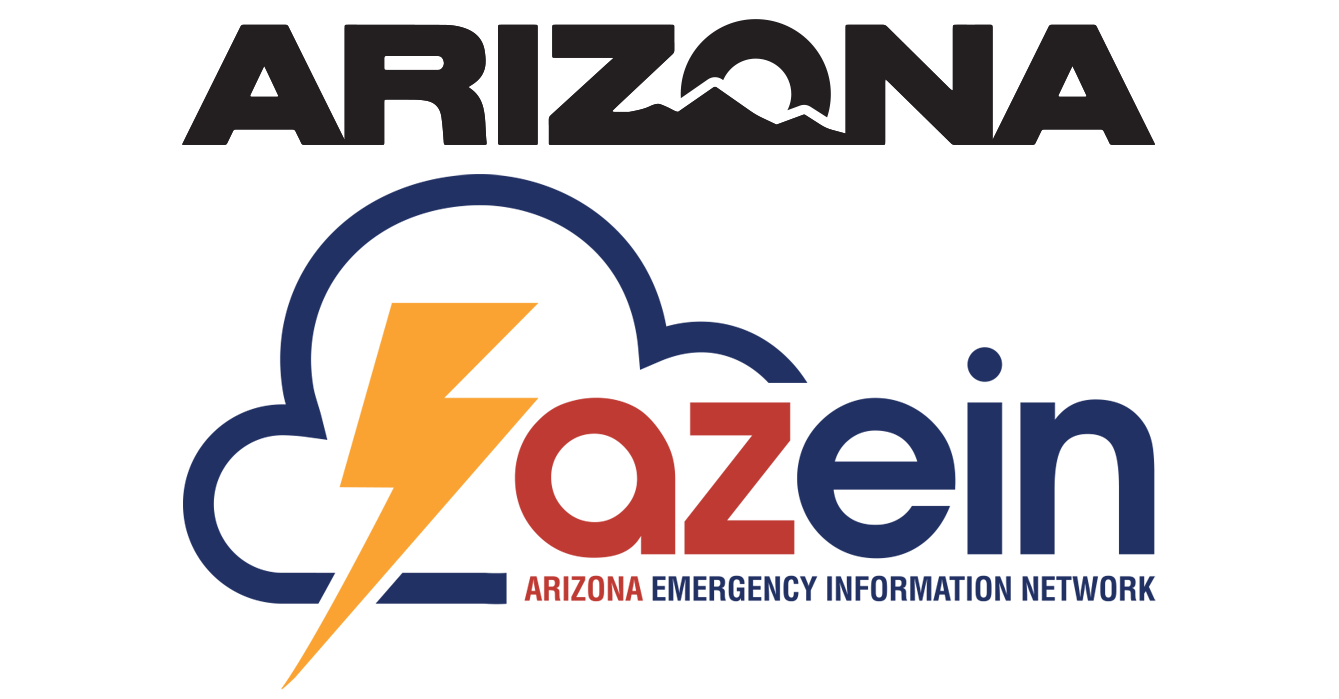Thunderstorms
Thunderstorms happen year-round in Arizona, but they are most common during the monsoon (mid-June through September). In Arizona, severe thunderstorms can produce heavy rain, flash flooding, dangerous winds, hail, dust storms and lightning. Lightning continues to be one of the top three storm-related killers in the United States.
BEFORE
- Build an emergency go kit and make a family communication plan.
- Sign up for your community’s warning system. Consider opting in to alerts from your county or tribal emergency management office as well as your local National Weather Service branch.
- Identify nearby, sturdy buildings close to where you live, work, study, and play.
- Cut down or trim trees that may be in danger of falling on your home.
- In case of flash flooding, plan alternate routes to and from places you frequent that avoid low-lying areas.
- Familiarize yourself with these terms to help identify a thunderstorm hazard:
- Severe Thunderstorm Watch—Tells you when and where severe thunderstorms are likely to occur. Watch the sky and tune to local radio or television for information.
- Severe Thunderstorm Warning—Issued when severe weather has been reported by spotters or indicated by radar. Warnings indicate imminent danger to those in the path of the storm.
Read More
DURING
- When thunder roars, go indoors. A sturdy building is the safest place to be during a thunderstorm.
- Pay attention to weather reports and warnings of thunderstorms. Be ready to change plans, if necessary, to be near shelter.
- When you receive a thunderstorm warning or hear thunder, go inside immediately.
- If indoors, avoid running water or using landline phones. Electricity can travel through plumbing and phone lines.
- Protect your property. Unplug appliances and other electric devices. Secure outside furniture.
- If boating or swimming, get to land and find a sturdy, grounded shelter or vehicle immediately.
- If necessary, take shelter in a car with a metal top and sides. Do not touch anything metal.
- Avoid flooded roadways. Just six inches of fast-moving water can knock you down, and one foot of moving water can sweep your vehicle away.
- If you’re outside away from shelter when thunder and lightning hit squat low to the ground in the lowest place you see, but be alert for flash flooding.
Read More
AFTER
- Never drive through a flooded roadway. Turn around, don’t drown!
- Stay away from storm-damaged areas and downed power lines. Report post-storm hazards to the appropriate local authorities.
- Listen to a NOAA Weather Radio or to local radio and television stations for updated information or instructions regarding potential flash flooding. Check in with your local National Weather Service branch on social media.
- Stay away from downed power lines and report them immediately.
Read More
RESOURCES
Read More
(source: Ready.gov)

